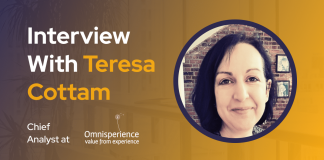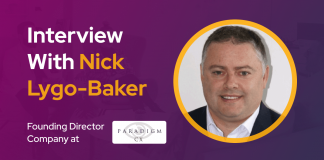Hi Sivakumar, tell us about yourself and your background.
I started my career as an electrical engineer commissioning machines at an automotive glass manufacturing plant. Bit by the software bug after having spent time automating conveyor belts at the plant, I shifted to the IT industry, becoming a software developer. Here is where I started developing a passion for Retail, while working in the warehouse operations of a major drug chain (hopefully their DCs still have my code running 😊).
Post my MBA specializing in Operations & Marketing, I joined Wipro’s Retail Consulting group as a business analyst. At Wipro, I was involved in operations consulting & product management for Fortune 100 retailers across sub-sectors – Off-price, Department stores, Mass merchandisers, Drug chains etc., and across functions such as omni-fulfilment, merchandising, store operations, and pharmacy ops.
Currently, I am a Senior Manager at Bain, leading the Retail benchmarking and diagnostics CoE. I have always wanted to explore the strategy side of retail and I am glad that I have this opportunity at Bain.
How did you start working in the customer experience space?
Early on in my career, when I was writing the business requirements for a project, I remember a client manager from Store Ops telling me that if you want a program sponsored by the leadership, ensure that it improves the customer experience at some level. Not surprisingly, no major transformation project in Retail goes without impacting customer experience. Only difference being – some projects have an indirect impact, and others more direct.
For example, we transformed the merchandising allocation application that helped a retailer’s allocation analysts manage assortments better. Though the transformation project was intended for the buyers and allocation analysts, the end beneficiary is the “local customer” in the zip-code/region who gets to see ‘more relevant’ merchandise in their shopping channels. While this is an example of indirect impact, I was involved in direct impact projects as well, such as improving the pick-up experience at a department store, reducing the “time for will-call” at a grocery store’s pharmacy division etc.
Can you tell us a little bit about your current role?
I lead Bain’s Retail benchmarking and diagnostics CoE. We are the Retail Data powerhouse at Bain, offering benchmarking services through our internal proprietary database and external data partnerships. Also, we develop and execute an array of retail diagnostic tools addressing various functions such as omnichannel commerce, supply chain, personalization 2.0, store operations etc., that evaluate retailers’ existing landscape through data & process analyses and provide recommendations.
How can companies better listen and understand their customer base?
It’s about ‘smart’ listening and achieving a balance between listening and cost of operations. With the plethora of tools available, companies can go all out in building an effective listening toolset. And with that – comes better insights and decision making. However, this comes with a huge operational cost that cannot effectively tie back to the investments made. The challenge is in maintaining a balance between limited budget and ‘effective’ listening.
To this end, I recommend retailers truly understand what they stand for, who their customers are now (and should be in the future), how they want to position with them – and then engage in a tailored listening strategy. For example, today, an organization might focus on a specific set of customers (for e.g., high value customers) and tend to satisfy them more by deploying listening tools across all of their touchpoints. However, through an exercise that defines their value proposition, the organization might uncover different customer profiles – some of them might not be very valuable today (in terms of CLV, basket size etc.,) but will be a significant contributor in other areas. By adopting a tailored listening strategy based on customers and their individual journeys, organizations can smartly invest their limited resources.
What are some companies that you think are doing an excellent job at customer experience, and why?
I have quite a few favorites.
I am a huge fan of a U.S. based grocer, with a significantly smaller assortment compared to peers. They have learnt that a significant chunk of customers finds the huge number of assortment options in grocery shopping, both daunting and confusing. Couple that with innumerable coupons and rewards, the customer is making several tiring decisions before checking out for a simple weekly grocery buy. I really like the way that they have simplified the in-store shopping experience.
Another organization I adore is a discount retailer with 17000+ stores in the U.S. It’s got to do with their fresh produce strategy – their decision to ‘fulfil’ food deserts with fresh merchandise. This might sound like simply adding another department, but for the end customer – a base that represents the poorest of the U.S. – getting access to fresh food at affordable prices and at a convenient location is everything. I commend them for investing in a space where adequate nutrition is the need of the hour.
Going beyond Retail, I have been hearing great things about a Chinese ride sharing firm, on how they leverage predictive analytics to perform resource allocation during rush hour traffic.
Many companies are currently undergoing digital transformation processes – what are your tips on a successful digital transformation?
When it comes to digital transformation, we all have been hearing leaders cautioning against investing in tech for tech’s sake, and always focus on the business need first. I have a slightly different take here. Technology helps retailers dream and imagine new use cases. So, while business needs may not be initially present when a new tech arrives, it is left to retailers to dare and imagine possibilities that can arrive with this tech. I agree that the primary driver for investing should be the business need, but if we do not allow for imagination and risk taking, there is no way we can grow.
Which brings us to my second tip – Adopt a test-learn-adapt approach. Driven by the business need, companies must adopt a calculated risk approach to test a new tech/solution, continuously learn, and adapt it to achieve the business need.
Lastly, organizations need to avoid looking at digital transformation in silos. One of the common reasons why digital transformation programs fail to yield expected benefits is because of the interdependence between other functions and departments which haven’t been included in the DX cycle. So, organizational culture – that leads to my final tip – needs to transcend beyond departmental boundaries for DX to be successful.
What are some CX solutions or tools that you’re keeping your eyes on right now?
There are more than a dozen tools in the CX space across different phases in a customer journey. Of these, I have high hopes for what a ‘personalization engine’ can achieve. With so much content bombarding us from all directions and channels, our minds are automatically tuned to receive ‘relevant’ messages alone. Be it product recommendations in the e-commerce space or therapy recommendations in healthcare, personalization is playing a huge role in making enterprises stay connected to their customers. Personalization is evolving from simply providing content (product, service, email messages) recommendations to tailoring and curating the buying/shopping experience for customers – which is more rapid and real-time. This means rapid augmentation of data from multiple sources and deciding the next-best action, without compromising on privacy and security.
I have always believed that a well-executed ‘personalization engine’ is the yesteryear shopkeeper in your local store who – because of their relevance and connect – is the primary reason why you still remember that store.
Did you read any interesting books this past summer that you’d like to recommend?
Steve Dennis’s Remarkable Retail and Yuval Harari’s 21 lessons for the 21st century.
The former explains why retailers need to stop being “boring” and lays a framework to become a remarkable retailer – a must-read for anyone who is part of the retail community.
Harari’s book is fascinating. Though I do not agree with all that is said in the book, I highly recommend it purely for the thought loops it gets you into thinking about the issues confronting the world. It is such a satisfying read that it gives you so much to discuss with your family and friends over coffee.
What is your favorite CX metric?
NPS is still my favorite metric (What else did you expect from a Bainie? 😊)






